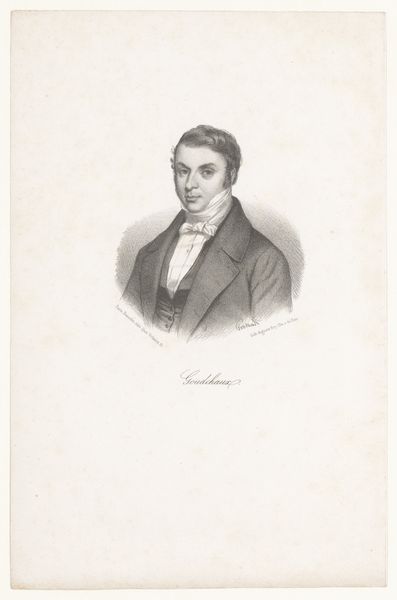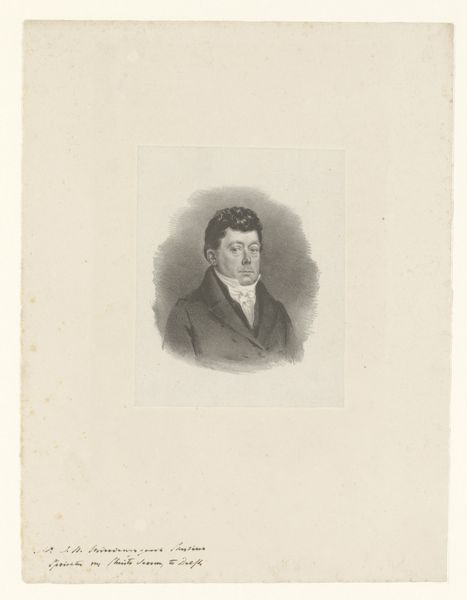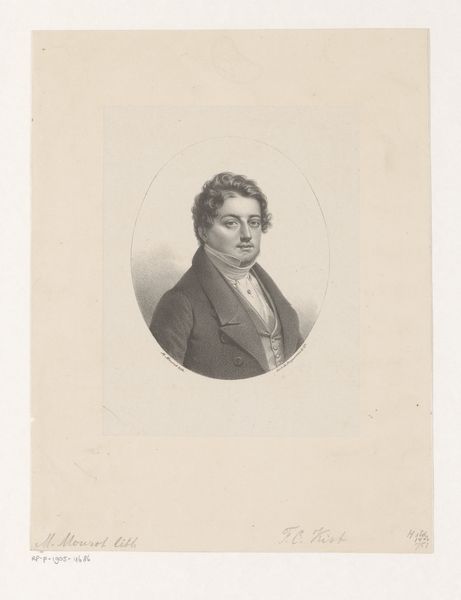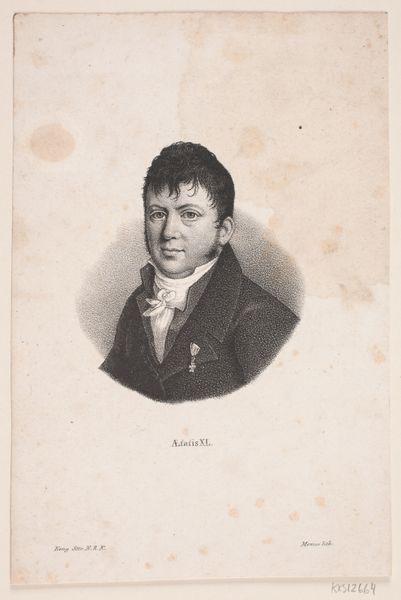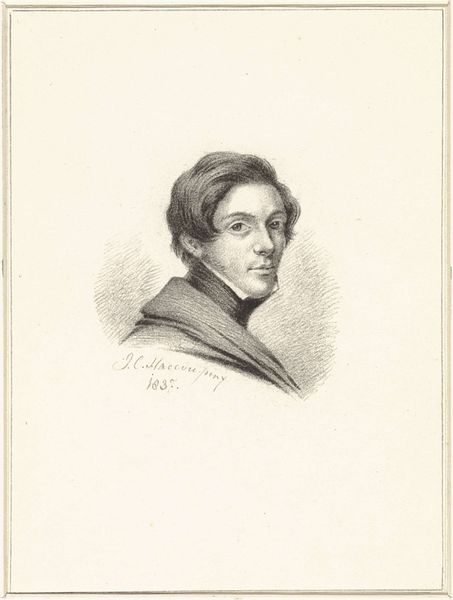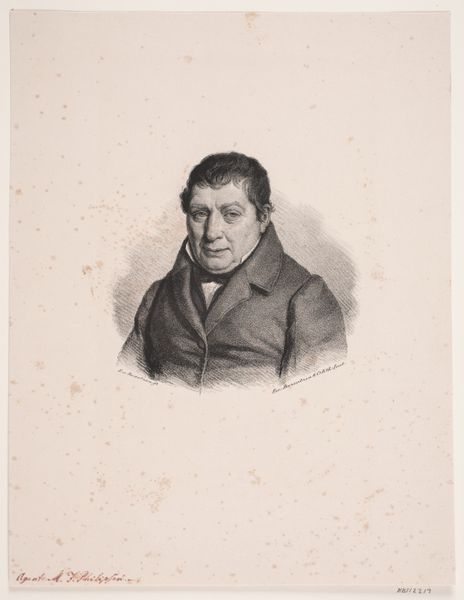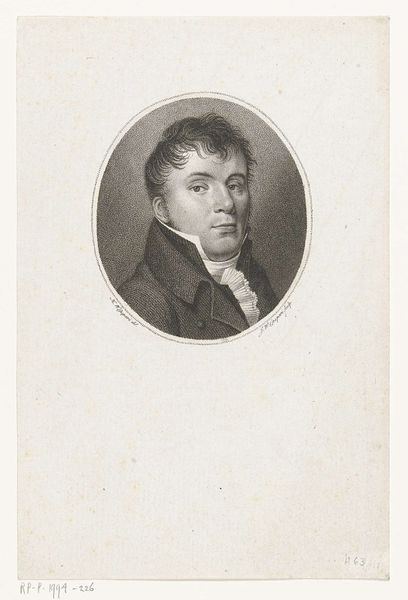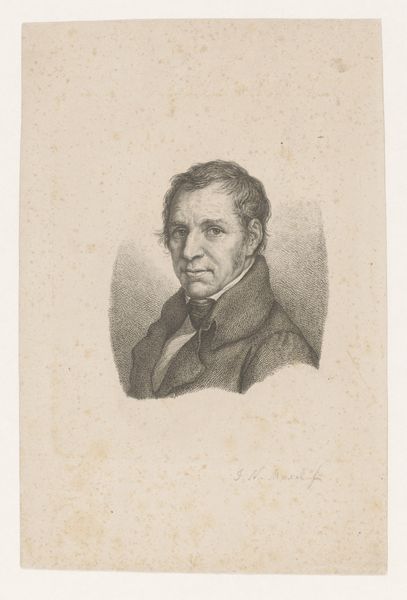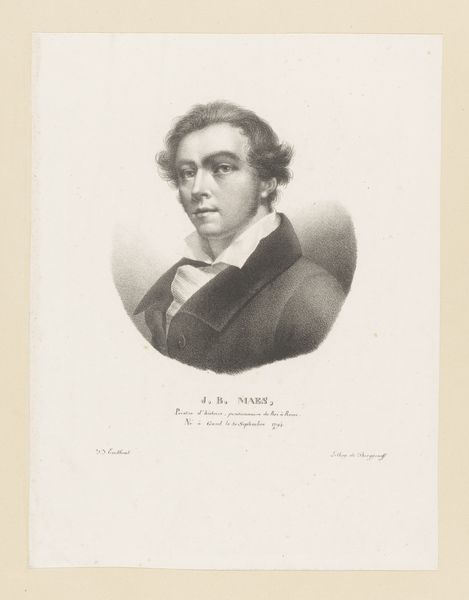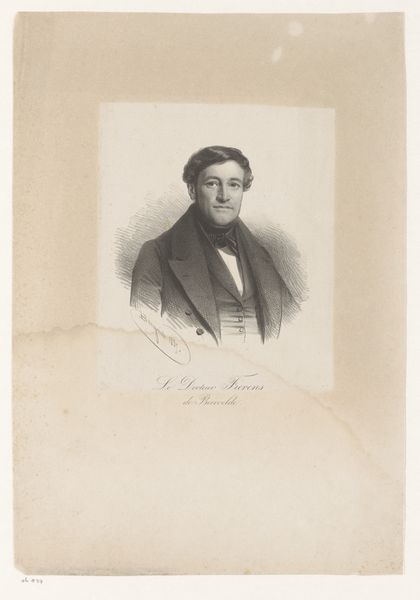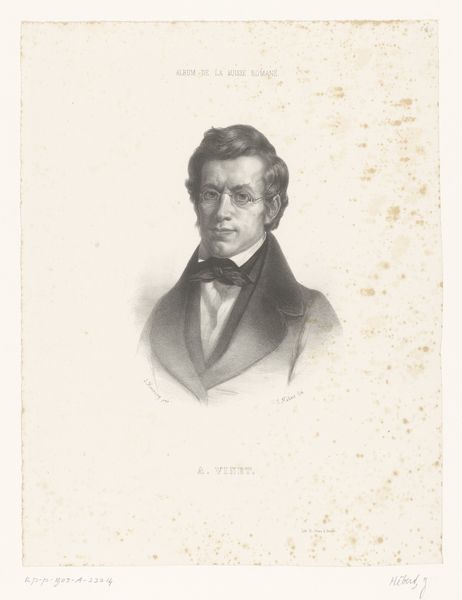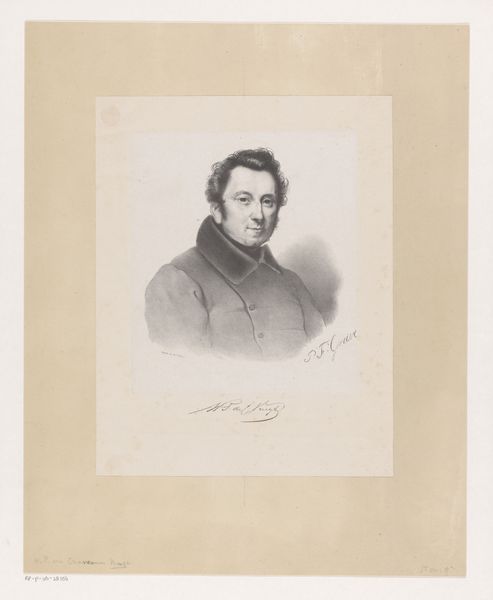
print, engraving
#
portrait
#
neoclassicism
# print
#
academic-art
#
engraving
Dimensions: height 306 mm, width 230 mm
Copyright: Rijks Museum: Open Domain
Curator: What a striking image. This is an engraving from 1822, a portrait of Eugène Verboeckhoven by Guillaume Philidor Van den Burggraaff, currently held at the Rijksmuseum. It’s a piece very much within the Neoclassical style. Editor: My initial reaction is a sense of reserved dignity. The subject's gaze is direct, but not challenging; almost inviting, and the monochromatic palette creates a timeless feel. There's a formality to it, a distinct sense of the era. Curator: Absolutely. Verboeckhoven was a rather prominent animal painter. This portrait highlights the increasing importance of artists in society. Notice the details of his clothing, a kind of understated elegance signaling his bourgeois status and artistic profession. Editor: Yes, his gaze definitely projects that elevated social standing! I see the strong, simple lines and the emphasis on clear contours - these point to Neoclassical ideals, evoking a sense of order and rationality. But there's also a soft, almost romantic touch in the rendering of his hair and eyes... It lends some warmth. Curator: I agree. It is a portrait designed to project an image, one that’s tied to a rising sense of professional artistic identity. The inscription also highlights that Verboeckhoven was a member of the Royal Society of Fine Arts of Ghent, speaking volumes about the institutional validation sought in that period. Editor: And notice how even though it's a simple engraving, the print captures light so well. Think of that cultural moment where clear, direct imagery was preferred over the florid excesses of preceding eras. It embodies self-assuredness, doesn't it? The visual vocabulary says volumes about cultural values. Curator: Indeed. It reflects the evolving societal relationship with artists and the construction of their public persona. It is as much about Verboeckhoven as a man than as a member of the academic system of the era. Editor: Well, considering that, it really shows how artistic and social identities became carefully woven, as much constructed for others as perceived internally! It definitely makes you think about the roles these people played then, in this historical moment, doesn't it? Curator: Precisely. Studying it helps understand artistic values and how professional validation influenced social image during the early 19th century. Editor: For me, it underscores how images retain power – shaping perceptions and immortalizing individuals beyond their lifetimes, a cultural encoding that continues to fascinate.
Comments
No comments
Be the first to comment and join the conversation on the ultimate creative platform.
